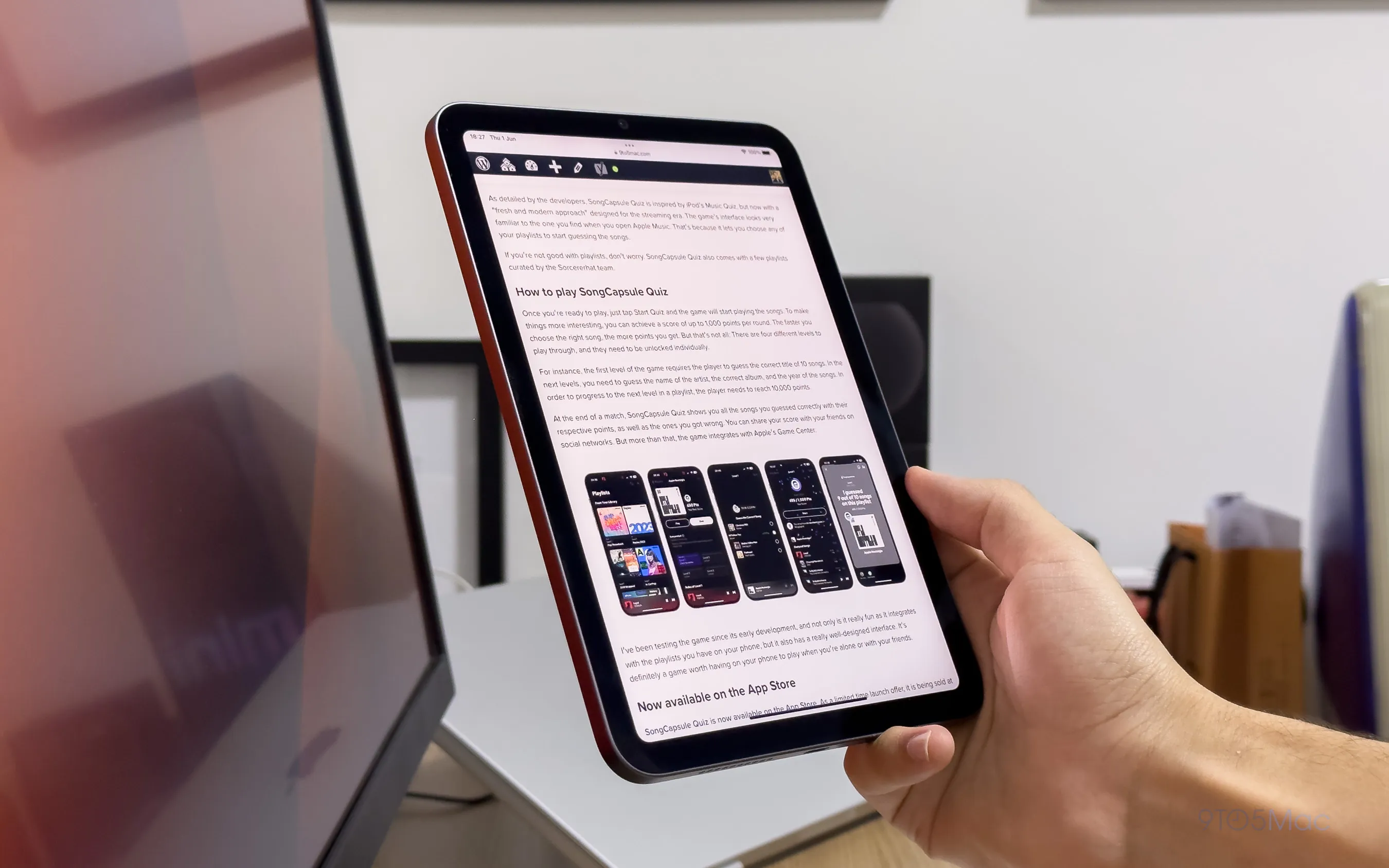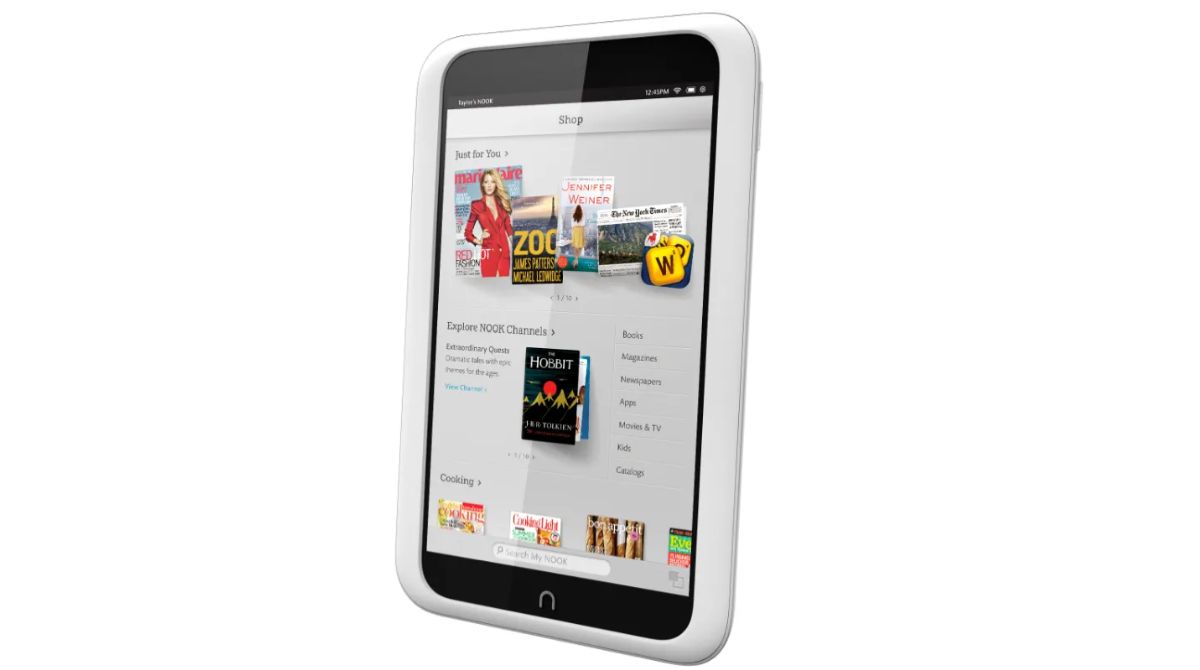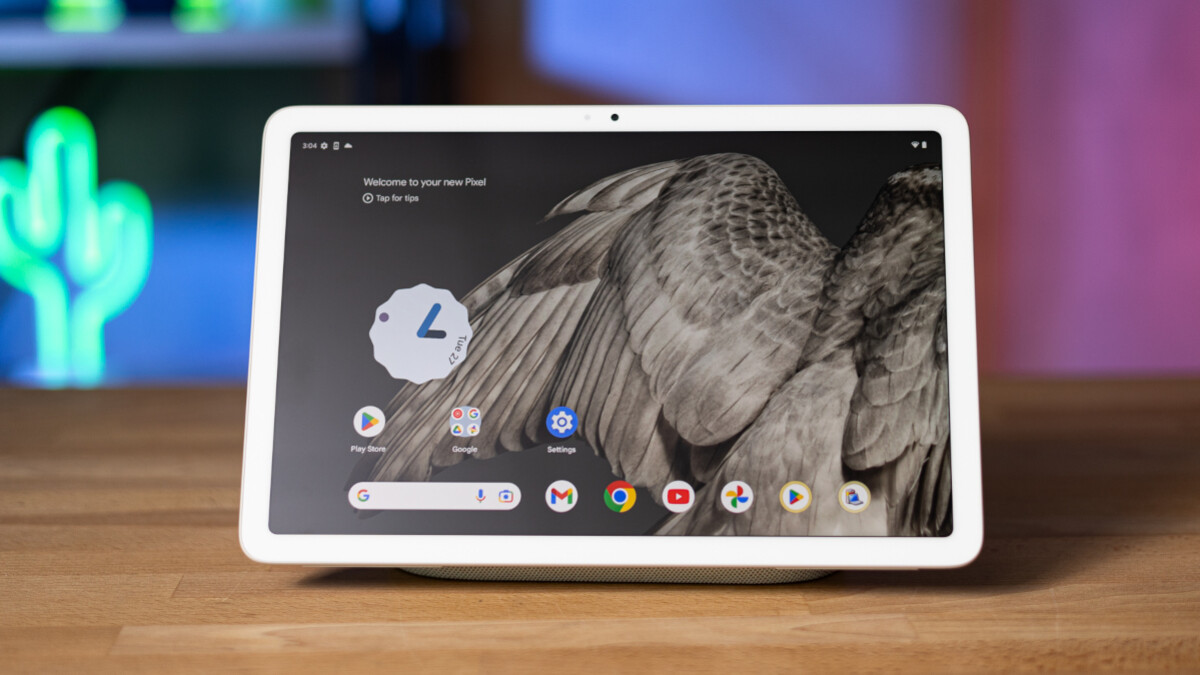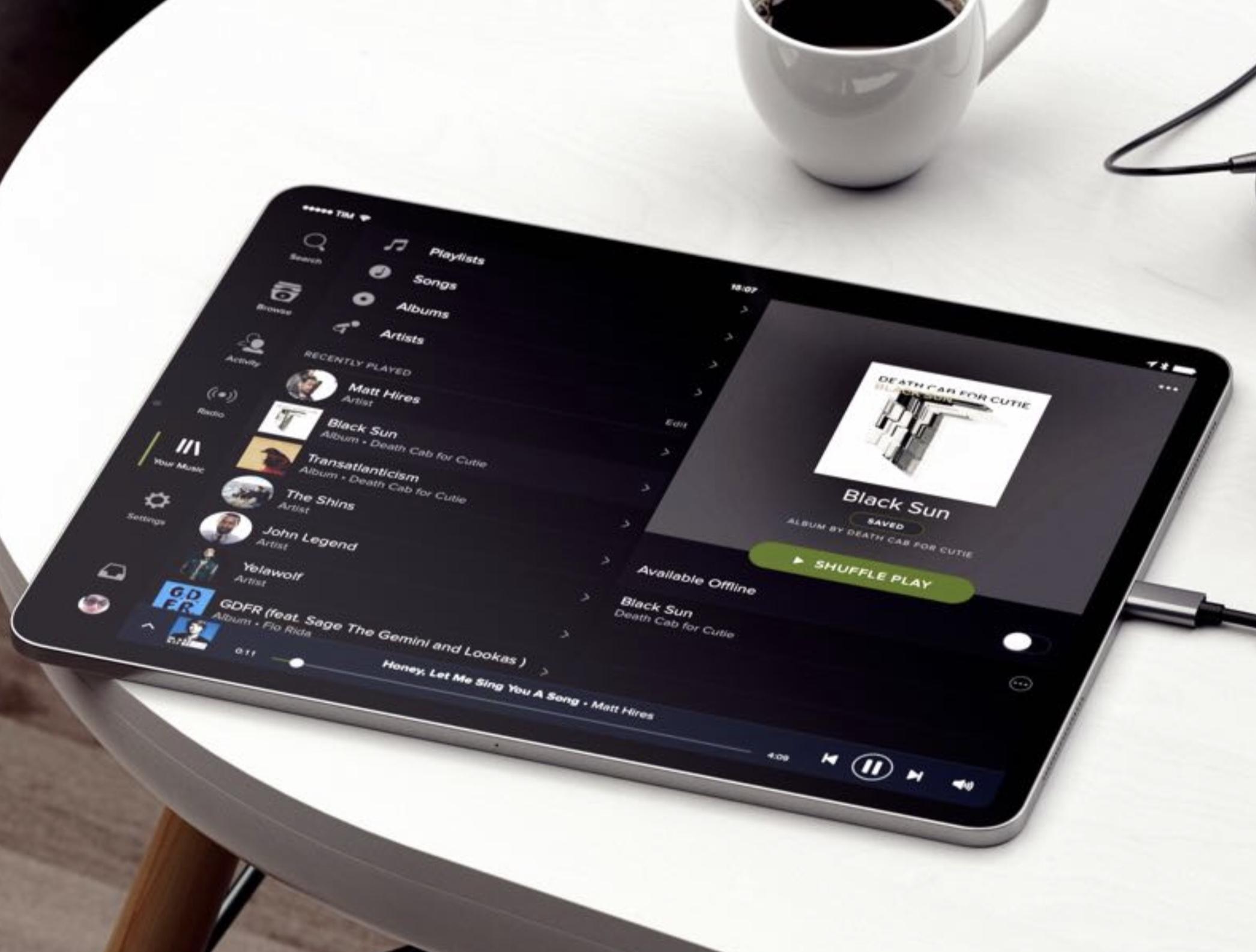Introduction
Choosing the best tablet can be a daunting task with the multitude of options available on the market. Whether you’re a student, a professional, or simply someone who loves staying connected on the go, finding a tablet that meets your needs is essential.
A tablet is a portable and versatile device that allows you to browse the internet, watch videos, play games, and even get work done. However, with various brands, sizes, features, and price ranges to consider, it can be overwhelming to make the right choice.
In this article, we’ll guide you through the factors to consider when choosing the best tablet for your needs. From operating systems and screen sizes to performance and battery life, we’ll cover all the crucial aspects that will help you make an informed decision.
Remember, what works for one person may not work for another, so it’s important to assess your own requirements and preferences before making a purchase. By the end of this article, you’ll have a clear understanding of what to look for when shopping for a tablet and be able to find the perfect device to suit your lifestyle.
So, let’s delve into the world of tablets and explore the key factors that you need to consider in order to choose the best one for you.
Operating System
The operating system (OS) of the tablet is a crucial factor to consider when making your selection. The OS not only determines the user interface and the overall user experience but also affects the availability of apps and software support.
There are primarily three major operating systems used in tablets: iOS, Android, and Windows. Each operating system has its own strengths and weaknesses, so it’s important to understand them before making a decision.
iOS, developed by Apple, is exclusive to their iPads. It is known for its smooth and intuitive interface, seamless integration with other Apple devices, and extensive app ecosystem. However, this exclusivity comes with a higher price tag and limited customization options.
Android, on the other hand, is an open-source operating system used by many tablet manufacturers. It offers a wide range of options in terms of brands, sizes, and price ranges. Android provides more customization options, compatibility with various apps, and seamless Google services integration. However, the app quality may vary compared to iOS, and some devices may experience slower software updates.
Windows tablets are popular among professionals and those who need productivity-focused features. With the familiar Windows interface, they offer compatibility with a wide range of software and apps. Windows tablets are ideal for tasks such as content creation, office work, and multitasking. However, the app selection for Windows tablets may be more limited compared to iOS and Android devices.
Consider your needs, preferences, and compatibility requirements when choosing an operating system for your tablet. Whether you prioritize a user-friendly interface, app availability, or advanced productivity features, selecting the right operating system will greatly enhance your overall tablet experience.
Screen Size
The screen size of a tablet plays a crucial role in determining its usability and portability. Tablets come in various screen sizes, ranging from as small as 7 inches to as large as 12.9 inches or more.
When considering screen size, it’s essential to strike a balance between convenience and functionality. Here are a few factors to consider:
- Portability: Smaller screen sizes, typically between 7 to 9 inches, offer increased portability and ease of handling. These tablets are lightweight and easy to slip into a bag, making them ideal for users who are always on the move or prefer one-hand usage. However, they may not provide the best viewing experience for prolonged usage or certain tasks such as content creation or gaming.
- Usability: If you prioritize a larger viewing area and better visual clarity, a tablet with a screen size of 9 to 11 inches may be more suitable. These tablets offer a spacious display for browsing, media consumption, and productivity tasks. Their larger screens make them ideal for tasks like editing documents, watching videos, or playing games that require more screen real estate.
- Productivity: For users who require enhanced productivity, larger screen sizes, such as 12 inches or more, provide a laptop-like experience. These tablets often come with detachable keyboards or stylus support, making them suitable for tasks like content creation, graphic design, or professional use. However, they may be less portable and bulkier to carry around.
Consider your specific needs and usage scenarios when choosing the screen size of your tablet. If you primarily use it for reading e-books, browsing the web, or casual media consumption, a smaller to medium-sized screen may suffice. On the other hand, if you require a tablet for work-related tasks, multimedia editing, or immersive gaming, a larger screen size would be more suitable.
Display Quality
The display quality of a tablet is a crucial aspect to consider as it directly affects your viewing experience. When evaluating the display quality, there are several factors to take into account:
- Resolution: The resolution of the display determines how sharp and detailed the content appears. Higher resolutions such as Full HD (1920×1080 pixels) or even 4K (3840×2160 pixels) offer a more immersive visual experience. Higher pixel density ensures crisp text, vibrant colors, and better image clarity, especially when viewing multimedia, reading e-books, or editing photos.
- Screen Technology: Different devices use various display technologies, including LCD, OLED, and AMOLED. LCD screens are commonly used and offer good color reproduction and brightness. OLED and AMOLED screens provide deeper blacks, vibrant colors, and better contrast ratios, resulting in a more visually appealing experience.
- Color Accuracy: It’s essential to choose a tablet with accurate color representation, especially if you are involved in tasks like photo editing or graphic design. Look for tablets that offer wide color gamut support or have color management features to ensure accurate color reproduction.
- Brightness and Viewing Angles: Consider the brightness levels of the display, especially if you frequently use the tablet outdoors or in brightly lit environments. Tablets with higher brightness settings ensure better visibility in different lighting conditions. Additionally, wide viewing angles prevent color distortion or loss of picture quality when viewing the screen from different angles.
When choosing a tablet, prioritize display quality based on your usage. If you primarily consume multimedia content, play games, or edit photos and videos, opt for a tablet with a high-resolution display and vibrant colors. However, if your usage is more focused on reading, web browsing, or general tasks, a tablet with a good LCD screen may suffice.
Ultimately, the display quality of the tablet plays a significant role in the overall user experience, so be sure to consider your needs and preferences when making your selection.
Performance and Processing Power
The performance and processing power of a tablet are crucial factors to consider, especially if you plan to use it for demanding tasks such as gaming, video editing, or running resource-intensive applications. Here are some key aspects to evaluate:
- Processor: The processor, or the Central Processing Unit (CPU), is responsible for executing tasks and managing the tablet’s performance. Look for tablets that feature processors from reputable manufacturers such as Qualcomm Snapdragon, Apple A-series, or Samsung Exynos. Higher-end processors offer faster performance and smoother multitasking capabilities.
- RAM: Random Access Memory (RAM) is responsible for temporarily storing data, allowing faster access to frequently used apps and tasks. Tablets with higher RAM capacities, such as 4GB or 6GB, offer smoother multitasking and better overall performance.
- Storage: The storage capacity determines how much data, apps, and files you can store on your tablet. Tablets typically offer internal storage options ranging from 16GB to 256GB or more. Consider your storage needs and look for tablets that offer expandable storage options, such as microSD card slots, if you require additional space.
- Graphics Processing Unit (GPU): If you’re into gaming or graphic-intensive tasks, consider tablets with dedicated GPUs. A dedicated GPU enhances the tablet’s ability to handle complex graphics and provides a smooth gaming experience with high frame rates and better visual quality.
- Software Optimization: The efficiency and optimization of the operating system and software can significantly impact the tablet’s overall performance. Look for tablets that run on the latest version of the operating system and have a clean and optimized user interface.
When considering performance and processing power, it’s important to align your requirements with the tablet’s capabilities. If you’re a power user or engage in resource-intensive tasks, opt for a tablet with a higher-end processor, ample RAM, and sufficient storage capacity. However, if your needs are more focused on casual web browsing, media consumption, or simple tasks, a tablet with lower specifications may be suitable.
Remember to strike a balance between your requirements and budget when evaluating the performance and processing power of a tablet. It’s crucial to choose a tablet that can handle your day-to-day tasks effectively and provide a smooth and responsive user experience.
Storage Capacity
The storage capacity of a tablet is an important consideration, as it determines how much data, apps, and files you can store on your device. When evaluating storage options, here are a few factors to keep in mind:
- Internal Storage: Tablets typically come with a certain amount of built-in storage, ranging from 16GB to 512GB or more. Consider your storage needs and how you plan to use the tablet. If you primarily use it for basic tasks like web browsing, email, and streaming, a tablet with lower storage capacity may suffice. However, if you anticipate storing large media files, downloading apps, or working with large documents, opt for a tablet with more storage space.
- Expandable Storage: Some tablets offer the option to expand storage using a microSD card slot. This is particularly useful if you require additional space but don’t want to invest in a device with a larger internal storage capacity. Check for expandable storage options if you anticipate needing more storage flexibility in the future.
- Cloud Storage: Utilizing cloud storage services like Google Drive, Dropbox, or iCloud can help alleviate storage limitations on the tablet. Cloud storage provides seamless access to your files from multiple devices, and it allows for automatic backups, freeing up space on your tablet for other data and applications.
- App Sizes and Requirements: Take note of the sizes of the apps you commonly use or plan to install on your tablet. Some apps, particularly games and media editing applications, can occupy several gigabytes of storage space. If you have specific apps in mind, ensure that you have enough storage capacity to accommodate them.
- Consider Future Needs: Think about your future needs when it comes to storage. If you anticipate using the tablet for an extended period of time, consider opting for a larger storage capacity to accommodate your growing data needs.
It’s important to strike a balance between your storage requirements and your budget. If you find that a tablet’s internal storage is limited, you can always rely on cloud storage or external storage options to supplement your needs. Evaluate your usage patterns and storage needs carefully to ensure you choose a tablet with sufficient storage capacity for your intended use.
Battery Life
Battery life is a critical aspect to consider when choosing a tablet, especially if you plan to use it on the go or for extended periods without access to charging. Here are some factors to consider when evaluating the battery life of a tablet:
- Battery Capacity: The battery capacity is measured in milliampere-hours (mAh) and indicates how much charge the battery can hold. Generally, tablets with higher battery capacities tend to offer longer battery life. Look for tablets with larger battery capacities if you need a tablet that can last throughout the day.
- Operating System and Optimization: The operating system and its optimization play a significant role in battery life. Different operating systems may have different power management capabilities, which can impact how efficiently the tablet uses its battery power. It’s a good idea to research and read reviews to determine how well a specific tablet’s operating system manages battery consumption.
- Screen and Display: The display is one of the most power-hungry components of a tablet. Tablets with larger screens, especially those with high resolutions and excessive brightness levels, tend to consume more power. Consider opting for a tablet with an energy-efficient screen technology, such as OLED or AMOLED, which can help extend battery life.
- Processor Efficiency: The processor’s power efficiency can have a significant impact on battery life. Look for tablets with processors that are known for their optimized power consumption and energy efficiency. Newer generations of processors usually offer better power management features.
- Usage Patterns: Your own usage patterns and habits can impact the battery life of a tablet. Tasks such as gaming, video streaming, and multitasking tend to drain the battery more quickly. Consider how you plan to use the tablet and adjust your expectations accordingly.
It’s important to note that manufacturers’ claimed battery life may not always reflect real-world usage. Reading user reviews and conducting thorough research can provide you with a more accurate understanding of a tablet’s actual battery performance.
Ultimately, the battery life of a tablet should align with your usage requirements. If you need a tablet that can last all day without charging, consider tablets with larger battery capacities and efficient power management features. However, if you mainly use your tablet for occasional tasks and have access to charging, battery life may be of lesser concern.
Connectivity Options
Connectivity options are an essential consideration when choosing a tablet, as they determine how you can connect and interact with other devices and networks. Here are some key connectivity options to evaluate:
- Wi-Fi: Wi-Fi connectivity allows you to connect to wireless networks, providing access to the internet. Ensure that the tablet supports the latest Wi-Fi standards (e.g., 802.11ac or 802.11ax) for faster and more reliable connections. Consider tablets with dual-band Wi-Fi capabilities for optimal performance, especially in crowded Wi-Fi environments.
- Cellular Connectivity (3G/4G/5G): If you require constant internet access outside of Wi-Fi networks, consider tablets with built-in cellular connectivity. These tablets have a SIM card slot and can connect to cellular networks, allowing you to browse the internet and use online services wherever there is network coverage. Choose a tablet that supports the appropriate cellular network technology (such as 3G, 4G, or 5G) based on your region and service provider.
- Bluetooth: Bluetooth connectivity enables seamless wireless connections with other compatible devices, such as headphones, speakers, keyboards, and mice. Look for tablets with Bluetooth 5.0 or higher for improved range, faster data transfer, and better overall connectivity.
- USB Ports: USB ports allow you to connect the tablet to external devices such as storage drives, keyboards, or mice. Look for tablets with USB Type-C ports, as they provide faster data transfer speeds and support charging and video output capabilities.
- NFC: Near Field Communication (NFC) enables contactless data exchange between devices, such as making mobile payments or sharing files by simply touching devices together. Consider tablets with NFC capabilities if you plan to use these features.
- GPS: GPS (Global Positioning System) allows tablets to determine their precise location. This is particularly useful if you need navigation services or rely on location-based apps. Ensure that the tablet has built-in GPS functionality for accurate positioning information.
Consider your connectivity needs and how you plan to use the tablet. If you mainly use the tablet for browsing, media consumption, and light productivity tasks within Wi-Fi range, Wi-Fi connectivity may be sufficient. However, if you require constant internet access or specific connectivity features, such as GPS or cellular connectivity, opt for tablets that offer those options.
It’s important to evaluate the connectivity options based on your usage scenarios and future needs, as they can greatly enhance the functionality and versatility of your tablet.
Camera Quality
The camera quality of a tablet is an important consideration, especially if you plan to use it for photography, video calls, or capturing special moments on the go. When evaluating the camera quality, here are a few factors to keep in mind:
- Resolution: The resolution of the camera sensor determines the level of detail in the photos or videos. Look for tablets with higher resolution cameras, typically measured in megapixels (MP), to ensure crisp and detailed images.
- Image Stabilization: Optical image stabilization (OIS) or electronic image stabilization (EIS) helps reduce blurriness caused by camera shake, resulting in sharper images and smoother videos. Tablets equipped with image stabilization technology are ideal, especially for shooting in low light conditions or while on the move.
- Low Light Performance: Consider the low light performance of the tablet’s camera. Tablets with larger pixel size and wider aperture lenses tend to perform better in low light, producing brighter and clearer images even in challenging lighting conditions.
- Additional Features: Some tablets offer additional camera features such as autofocus, facial recognition, HDR (High Dynamic Range) capabilities, and advanced shooting modes. These features can enhance your photography experience and allow you to capture professional-looking photos.
- Front and Rear Cameras: Evaluate both the front and rear camera capabilities if you plan to engage in video calls or take selfies. Tablets with higher resolution front-facing cameras enable clearer video calls, while tablets with better rear cameras provide superior photo and video quality.
Keep in mind that tablet cameras, although convenient, may not match the image quality of dedicated digital cameras or smartphones with advanced camera systems. However, they can still capture great moments and serve well for casual photography needs.
If photography is a priority, consider tablets with a reputation for excellent camera quality and positive reviews. Additionally, it may be helpful to research sample photos and camera specifications to gauge the image quality of a specific tablet.
Ultimately, the camera quality of the tablet should align with your photography needs. Choose a tablet with suitable camera specifications and features based on your expected usage, whether it’s capturing family memories, video calls, or documenting your adventures.
Price and Budget Considerations
Price plays a significant role when choosing a tablet, as it ultimately determines what features and specifications you can afford. Here are some factors to consider when evaluating the price and budget for a tablet:
- Establish a Budget: Determine how much you are willing to spend on a tablet. Having a budget in mind helps narrow down your options and prevents overspending.
- Identify Your Needs: Assess your needs and prioritize the features that are essential to you. Determine which specifications are a must-have and which ones can be compromised based on your budget limitations.
- Consider Brand and Reputation: Tablets from well-known brands often come with a higher price tag due to their reputation, reliability, and customer support. However, lesser-known brands may offer similar features at a more affordable price.
- Avoid Overbuying: Be realistic about your usage requirements. If you primarily use the tablet for basic tasks like web browsing, email, and media consumption, there’s no need to invest in high-end models with advanced features that you may not fully utilize.
- Compare Prices and Models: Research different tablet models and compare their specifications, features, and prices. Look for deals, discounts, or promotions that can help you get more value for your money.
- Consider Refurbished or Older Models: If your budget is tight, consider purchasing a refurbished tablet or opting for a slightly older model. Refurbished tablets have been restored to working condition and often come at a lower price without compromising on quality.
- Read User Reviews: User reviews can provide valuable insights into the performance, durability, and overall user satisfaction of a tablet. Consider the feedback from other users to ensure you’re making an informed decision based on real-world experiences.
Remember that while price is an important consideration, it’s also essential to find the right balance between your budget and the features and specifications that meet your needs. Don’t forget to factor in additional costs such as accessories, extended warranties, or software subscriptions when considering the overall price.
By considering your budget and prioritizing your specific needs, you can find a tablet that offers the best value for your money and meets your expectations in terms of performance, features, and overall user experience.
User Reviews and Feedback
When choosing the best tablet, it’s crucial to consider user reviews and feedback. User reviews provide valuable insights into real-world experiences with the tablet, helping you make an informed decision. Here’s why user reviews matter and how to effectively use them:
- Reliability and Performance: User reviews can shed light on the reliability and overall performance of a tablet. Reading reviews can give you an idea of how well the tablet handles different tasks and whether it meets the advertised specifications.
- Long-Term Durability: User reviews can provide insights into the long-term durability of a tablet. Look for reviews that comment on the build quality, resistance to wear and tear, and the tablet’s ability to withstand daily use.
- Software and Updates: Users often discuss software updates, bugs, and general software performance in their reviews. This can help you gauge how well the tablet manufacturer provides updates and addresses software-related issues.
- Battery Life and Charging: User reviews can provide real-world feedback on the battery life and charging capabilities of a tablet. Look for consistent feedback regarding the battery performance to ensure that it aligns with your expectations.
- Camera and Audio Quality: Users often share their experiences with the camera and audio quality in their reviews. Pay attention to reviews that discuss the camera’s performance, low light capabilities, and audio output to determine if it meets your specific needs.
- Customer Support: User reviews can provide insights into the customer support provided by the tablet manufacturer. Look for reviews that mention responsive customer service, warranty claims, and overall customer satisfaction.
While user reviews are valuable, it’s important to consider the overall consensus and balance the positive and negative feedback. Assess the credibility of the reviewers and look for patterns or repeated comments to form a more balanced opinion about a tablet.
Remember that user reviews are subjective, so consider your own needs and preferences when evaluating them. Pay more attention to reviews from users who have similar use cases and requirements as yours.
By taking the time to read user reviews and feedback, you can gather valuable insights and make a more informed decision about which tablet is the best fit for your needs and expectations.
Conclusion
Choosing the best tablet requires careful consideration of various factors to ensure that it meets your specific needs and preferences. By evaluating aspects such as the operating system, screen size, display quality, performance and processing power, storage capacity, battery life, connectivity options, camera quality, price, and user reviews, you can make an informed decision that aligns with your requirements and budget.
Remember that there is no one-size-fits-all solution when it comes to tablets. Your choice should be based on your intended usage, whether it’s for entertainment, productivity, or a combination of both. Prioritize the features that matter most to you and be considerate of your budget constraints.
Researching and reading user reviews play an integral role in the decision-making process. They provide valuable insights into the real-world experiences and satisfaction of other users. However, it’s important to consider a wide range of feedback and make informed judgments based on reliable sources.
Ultimately, the best tablet is the one that seamlessly integrates into your lifestyle, enhances your productivity, and provides an enjoyable user experience. By taking into account the factors discussed in this article, you can confidently select a tablet that meets your unique needs, allowing you to make the most of its features and capabilities for years to come.

























